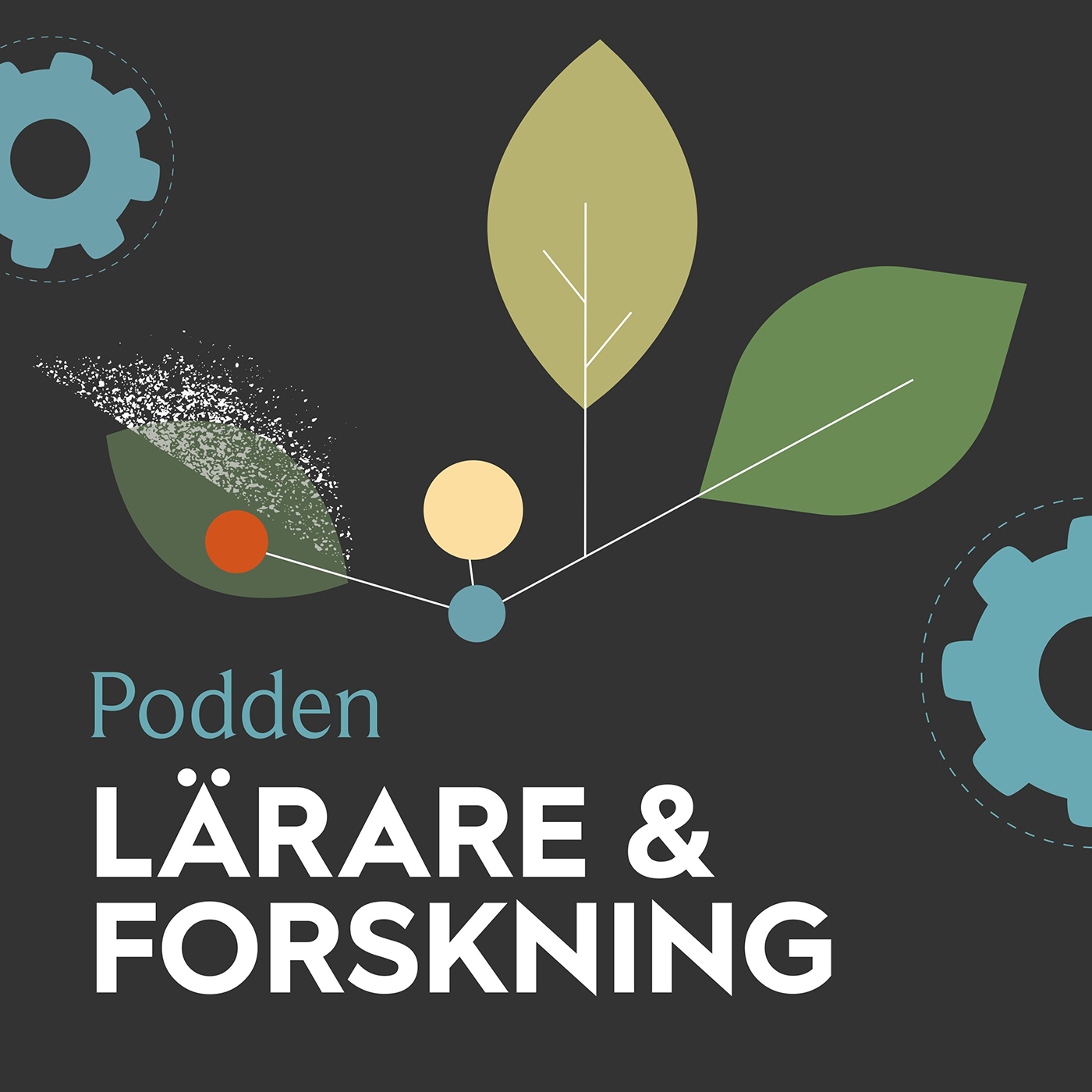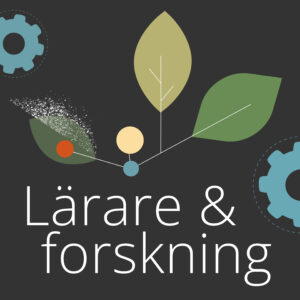”Tänk om …”: Lekresponsiv undervisning om skriftspråkskunskap i förskoleklassen
DOI:
https://doi.org/10.61998/forskul.v12i1.22915Nyckelord:
förskoleklass, lekresponsiv undervisning, skriftspråk, prospektivt tänkandeAbstract
Artikeln presenterar en studie där lärare i förskoleklass, tillsammans med forskare, inkorporerar lek i undervisningen. Som teoretiskt perspektiv används Lekresponsiv undervisning, där lärare och elever växlar, i kommunikationen, mellan vedertagen kunskap (som är), fantasi (som om) och prospektivt tänkande (tänk om). Empirin utgörs av lärarnas videoobservationer, med fokus på skriftspråkliga aktiviteter. Syftet var att bidra med kunskap om hur eleverna kan göras delaktiga i en bokstavsaktivitet och hur prospektivt tänkande kan komma i spel. Studien ger exempel på hur eleverna engageras genom att i tanken abstrakt leka med hur det skulle kunna vara annorlunda (tänk om det vore …) och därigenom bekantar sig med, och börjar appropriera, den kulturella verktygslåda som det skrivna språket utgör. Resultatet visar hur olika former av prospektivt tänkande framträder i aktiviteten och hur eleverna därigenom praktiserar kreativitet, löser verkliga problem, engagerar sig i problemlösning, finner egna lösningar samt formulerar nya frågor och lösningar.
”What if …”: Play-responsive teaching about literacy in the preschool class
The article reports a study where teachers in the preschool class, together with a researcher, incorporate play in teaching. Theoretically, the study builds on Play-Responsive Early Childhood Education and Care (PRECEC). Central to PRECEC is communicative patterns where participants (children and teachers) shift between, and relate, culturally established knowledge (as is), fantasy (as if), and prospective thinking (what if). Data consist of video observations of written language activities. The aim was to contribute knowledge about how pupils can become involved in a letter activity and how prospective thinking is actualized and responded to. The pupils were engaged through imaginatively playing with the idea of how something could be different and thereby become familiar with, and begin to appropriate, the cultural toolbox that the written language constitutes. The result shows how different forms of prospective thinking appear in the activity and how the pupils practice creativity, solve real problems, get involved in problem solving, find their own solutions and formulate new questions and solutions.
Referenser
Ackesjö, H. (2021). (Hur) Bidrar mer bedömning till ökat lärande?. BARN - Forskning om barn og barndom i Norden. 39(1), 83–93. http://dx.doi.org/10.5324/barn.v39i1.3838
Ackesjö, H. & Persson, S. (2019). The schoolarisation of the preschool class – policy discourses and educational restructuring in Sweden. Nordic Journal of Studies in Educational Policy, 5(2), 127–136. https://doi.org/10.1080/20020317.2019.1642082
Alatalo, T. & Johansson, A.-M. (2019). ”Kan man köra en skottkärra med fyrkantigt hjul?”: Läs- och skrivutvecklande praktiker i teknikundervisning i förskoleklass. Nordic Journal of Literacy Research, 5(3), 63–82. https://doi.org/10.23865/njlr.v5.2018
Alatalo, T. & Johansson, A.-M. (2022). “Nu läser vi grodans dagbok”. Läs-och skrivutvecklande praktiker i naturvetenskap i förskoleklass. Pedagogisk forskning i Sverige, 27(2), 96–118.
Alatalo, T., Norling, M., Magnusson, M., Tjäru, S., Næss Hjetland, H. & Hofslundsengen, H. (2023). Read-aloud and writing practices in Nordic preschools, Scandinavian Journal of Educational Research, 68(3), 588–603. https://doi.org/10.1080/00313831.2023.2175243
Aminoff, C. (2017). Samtals- och skriftspråksorienterade lärarledda aktiviteter i förskoleklass. [Licentiat-uppsats, Linköpings universitet].
Aminoff, C. (2021). Skriftspråkliga handlingar i förskoleklass och årskurs 1. [Doktorsavhandling, Linköpings universitet].
Bingham, G. E., Quinn, M. F. & Gerde, H. K. (2017). Examining early childhood teachers’ writing practices: Associations between pedagogical supports and children’s writing skills. Early Childhood Research Quarterly, 39, 35–46. https://doi.org/10.1016/j.ecresq.2017.01.002
Björklund, E. (2008). Att erövra litteracitet. Små barns kommunikativa möten med berättande bilder, text och tecken i förskolan. [Doktorsavhandling, Göteborgs universitet].
Botö, K. (2018). Litteracitetsaktiviteter i skärningspunkten mellan lek och undervisning i förskola och skola. [Licenciatuppsats, Göteborgs universitet]. http://hdl.handle.net/2077/57934
Botö, K., Lantz-Andersson, A. & Wallerstedt, C. (2017). “Ja tycker om B” – barns deltagande i läs-och skrivundervisning i förskolan. Forskning om undervisning och lärande, 5(2), 78–99.
Brice Heat, S. (1983). Ways with words: Language, life and work in communities and classrooms. Cambridge University Press.
Bubikova-Moan J., Hjetland, H. N. & Wollsheid, S. (2019). ECE teachers’ views on play-based learning: A systematic review. European Early Childhood Education Research Journal, 27(6), 776–800. https://doi.org/10.1080/1350293X.2019.1678717
Burnard, P., Craft, A., Cremin, T., Duffy, B., Hanson, R., Keene, J., Haynes, L. & Burns, D. (2006). Documenting ‘possibility thinking’: A journey of collaborative enquiry. International Journal of Early Years Education, 14(3), 243–262.
Cazden, C. B. (2001). Classroom discourse: The language of teaching and learning (2 uppl.). Heinemann.
Clay, M. (1975). What did I write? Beginning writing behaviour. Heinemann Educational.
Coleman, A. M. (2015). A dictionary of psychology (4 uppl.). Oxford University Press.
Craft, A. (2002). Creativity and early years education: A lifewide foundation. Continuum.
Craft, A. (2010). Possibility thinking and wise creativity: Educational futures in England? I R. A. Beghetto & J. C. Kaufman (Red.), Nurturing creativity in the classroom (s. 289–312). Cambridge University Press. https://doi.org/10.1017/CBO9780511781629.015
Craft, A. (2014). Creativity and Possibility in the Early years. http://www.tactyc.org.uk/pdfs/Reflection-craft.pdf
Cremin, T., Burnard, P. & Craft, A. (2006). Pedagogy and possibility thinking in the early
years. Thinking Skills and Creativity, 1, 108–119. http://dx.doi.org/10.1016/j.tsc.2006.07.001
Derry, S. J., Pea, R. D., Barron, B., Engla, R. A., Ericson, F., Goldman, R., Hall., Koschman, T., Lemke, J. L., Sherin, M. G. & Sherin, B. L. (2010). Conducting video research in the learning sciences: Guidance on selection, analysis, technology, and ethics, Journal of the Learning Sciences, 19(1), 3–53.
Dickinson, D. K., & Caswell, L. (2007). Building support for language and early literacy in preschool classrooms through in-service professional development: Effects of the literacy environment enrichment program (LEEP). Early Childhood Research Quarterly, 22(2), 243–260. https://doi.org/10.1016/j.ecresq.2007.03.001
Dyson, A. H. (2010). Writing childhoods under construction: Revisioning “copying” in early childhood. Journal of Early Childhood Literacy, 10(1), 7–31. https://doi.org/10.1177/1468798409356990
Fast, C. (2007). Sju barn lär sig läsa och skriva: Familjeliv och populärkultur i möte med förskola och skola. [Doktorsavhandling, Uppsala universitet].
Ferreiro, E. & Teberosky, A. (1983). Literacy before schooling. Heinemann.
Fleer, M. & van Oers, B. (2018). International trends in research: Redressing the north-south balance in what matters for early childhood education research. I M. Fleer & B. van Oers (Red.), International handbook on early childhood education (s. 1–31). Springer. https://doi.org/10.1007/978-94-024-0927-7_1
Forsberg, C. (2021). Skrivandets gränser: Normering genom skrivdiskurser i tidig skrivundervisning. [Doktorsavhandling, Linnéuniversitetet].
Huizinga, J. (1955). Homoludens; A study of the play element in culture. Beacon Press. (Originalverk publicerat 1938)
Lagerlöf, P., Wallerstedt, C. & Pramling, N. (2023). Participation and responsiveness: Children’s rights in play from the perspective of play-responsive early childhood education and care and the UNCRC. Oxford Review of Education, 49(5), 698–712. https://doi.org/10.1080/03054985.2022.2154202
Lago, L., Persson, S. & Ackesjö, H. (2020). Förskoleklassens institutionella kulturer. Utbildning och Demokrati, 29(1), 85–108. http://dx.doi.org/10.48059/uod.v29i1.1138
Magnusson, M. (2013). Skylta med kunskap. En studie av hur barn urskiljer grafiska symboler i hem och förskola. [Doktorsavhandling, Göteborgs universitet].
Magnusson, M. & Pramling, N. (2017). In ‘Numberland’: play-based pedagogy in response to imaginative numeracy, International Journal of Early Years Education, 26(1), 24-41. http://dx.doi.org/10.1080/09669760.2017.1368369
Magnusson, M. & Pramling Samuelsson, I. (2019). Att tillägna sig skriftspråkliga redskap genom att leka affär. Forskning om undervisning och lärande, 7(1), 23–43.
Mäkitalo, Å. (2016). On the notion of agency in studies of interaction and learning, Learning, Culture and Social Interaction, 10, 64-67. https://doi.org/10.1016/j.lcsi.2016.07.003
Nilsen, M. (2018). Barns och lärares aktiviteter med datorplattor i förskolan [Doktorsavhandling, Göteborgs universitet]. http://hdl.handle.net/2077/57483
National Early Literacy Panel (2008). Developing early literacy: Report of the national early literacy panel. National Institute for Literacy. https://lincs.ed.gov/publications/pdf/NELPReport09.pdf
Nuthall, G. (2004). Relating classroom teaching to student learning: A critical analysis of why research has failed to bridge the theory-practice gap. Harvard Educational Review, 74(3), 273–306. http://dx.doi.org/10.17763/haer.74.3.e08k1276713824u5
OECD. (2018). The future of education and skills. Education 2030. http://www.oecd.org/education/2030/E2030%20Position%20Paper%20(05.04.2018).pdf
Pramling, N. & Pramling Samuelsson, I. (2010). School readiness and school´s readiness: On the child´s transition from preschool to school. I S. Suggate & E. Reese (Red.), Contemporary debates in childhood education and development (s. 133–142). Routledge.
Pramling, N., Kultti, A. & Pramling Samuelsson, I. (2019b). Play, learning and teaching in early childhood education. I P. K. Smith & J. L. Roopnarine (Red.), The Cambridge handbook of play: Developmental and disciplinary perspectives (s. 475–490). Cambridge University Press. https://doi.org/10.1017/9781108131384.026
Pramling, N. & Wallerstedt, C. (Red.). (2019). Lekresponsiv undervisning i förskolan [temanummer]. Forskning om undervisning och lärande, 7(1).
Pramling, N., Wallerstedt, C., Lagerlöf, P., Björklund, C., Kultti, A., Palmér, H., Magnusson, M., Thulin, S., Jonsson, A. & Pramling Samuelsson, I. (2019a). Play-responsive teaching in early childhood education. Springer. https://doi.org/10.1007/978-3-030-15958-0
Pramling Samuelsson, I. & Asplund Carlsson, M. (2008). The playing learning child: Towards a pedagogy of early childhood, Scandinavian Journal of Educational Research, 52(6), 623–641.
Quinn, M. F. & Bingham, G. E. (2022). Examining early composing: Children´s differential writing performance based on task context and scoring conceptualization. Early Education and Development, 33(1), 139–163.
Ring, E. & O´Sullivan, L. (2018). Dewey: A panacea for the `scoolification´ epidemic. Education 3–13, 46(4), 402–410. http://dx.doi.org/10.1080/03004279.2018.1445474
Rommetveit, R. (1974). On message structure: A framework for the study of language and communication. Wiley.
Sandberg, G. (2012). På väg in i skolan. Om villkor för olika barns delaktighet och skriftspråkslärande. [Doktorsavhandling, Uppsala universitet]. https://urn.kb.se/resolve?urn=urn:nbn:se:uu:diva-182881
Skoog, M. (2012). Skriftspråkande i förskoleklass och årskurs 1. [Doktorsavhandling, Örebro universitet]. https://urn.kb.se/resolve?urn=urn:nbn:se:oru:diva-20277
Skolverket. (2019). Läroplan för grundskolan, förskoleklassen och fritidshemmet 2011: reviderad 2019.
Vaihinger, H. (2001). The philosophy of “as if”: A system of the theoretical practical and religious fictions of mankind (6 uppl.). Routledge. (Originalverk publicerat, 1924)
Vetenskapsrådet. (2017). God forskningssed. [Elektronisk resurs]
Vygotsky, L. S. (1978). Mind in Society: The development of higher psychological processes. Harvard University Press.
Vygotsky, L. S. (1995). Fantasi och kreativitet i barndomen (K. Öberg Lindsten, Övers). Daidalos.
Wallerstedt, C., Brooks, E., Eriksen Ødegaard, E. & Pramling, N. (Red.). (2023). Methodology for research with early childhood education and care professionals. Springer. https://link.springer.com/book/10.1007/978-3-031-14583-4
Wallerstedt, C., & Pramling, N. (2017). Epilog. I C. Wallerstedt, A. Berglund & N. Pramling (Red.), Konstnärligt seende och vad barn kan lära på museum (s. 124–127). Nordiska akvarellmuseet.
Wertsch, J. V. (1998). Mind as action. Oxford University Press.
Whitebread, D. (2010). Play, metacognition and self-regulation. I P. Broadhead, J. Howard, & E. Wood (Red.), Play and learning in the early years (s. 161 -176). Sage.
Worthington, M. & van Oers, B. (2015). Children’s social literacies: Meaning making and the emergence of graphical signs and text in pretence. Journal of Early Childhood Literacy, 17(2),1–29.
Downloads
Publicerad
Referera så här
Nummer
Sektion
Kategorier
Licens
Copyright (c) 2024 Maria Magnusson

Det här verket är licensierat under en Creative Commons Erkännande 4.0 Internationell-licens.
Författare till innehåll publicerat i Forskul behåller upphovsrätten till sina verk. Artiklar publiceras under villkoren i en Creative Commons-licens CC BY, som tillåter användning, nedladdning, distribution, länkning till och reproduktion i vilket medium som helst, förutsatt att originalverket är korrekt citerat.






